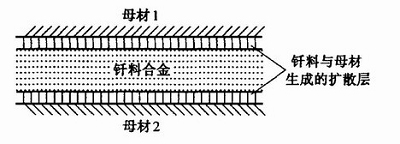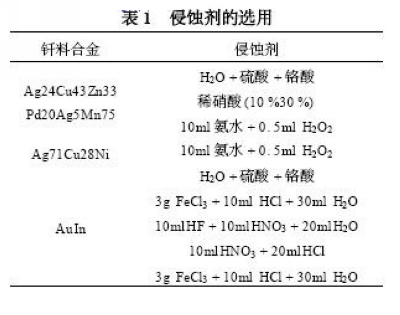Preparation of metallographic samples of precious metal solder joints
1 Introduction Weld structure diagram (1) Precious metal solder alloys, especially gold-based solders, are much more resistant to corrosion than base metals (non-precious metal materials). Next page Stainless Steel Fasteners,Stainless Steel Screws,Stainless Steel Bolts,Stainless Steel Wood Screws Taizhou Shuwen Stainless steel Co., Ltd , https://www.shuwengroup.com
Brazing technology is one of the important components in the field of modern welding. Due to the extensive brazing base metal of precious metal alloy brazing filler metal (silver alloy, gold alloy and palladium alloy), the joint strength is high, the plasticity is good, the corrosion resistance is strong, and the thermal shock resistance It is excellent in properties, so alloys such as AuNi18, PdAgMn, PdNi, AgCuZn and AgCuZnCd have been widely used in aero-engine manufacturing processes. In the quality inspection of brazed joints, the metallographic examination of brazed joints plays an important role. The metallographic erosion method of precious metal solder joints has not been reported systematically. In this paper, the preparation characteristics and laws of the metallographic samples of the brazing joints of precious metals brazing alloys for the Spey engine are discussed.
The typical weld structure of a brazed piece is shown in the figure. It can be seen from the figure that the weld is composed of five different layers. Due to the large difference between the corrosion resistance of the precious metal alloy and the base metal, it is necessary to show the metallographic structure with clear five layers. In the preparation of metallographic samples, Pay attention to the following features. 
(2) From the perspective of structural stability, the brazing filler metal in the weld is the schematic diagram of the weld structure of the cast drawing, and the two base metals are basically annealed under the high temperature of brazing, and the structure is relatively stable, so the weld is in the middle. The brazing material is prone to corrosion and the parent metal of the annealed layer on both sides is difficult to corro
(3) In order to save precious metals, usually the weldment samples are small and difficult to fix. The weldments must be fixed with special clamps or mounting machines to make them easy to clamp. It is also considered to be suitable for brittle and ultra-thin weldments that are not resistant to pressure. Cold setting method. In addition, chamfering and relief at the weld should be avoided as much as possible during the grinding and polishing process.
(4) It is difficult to select an etchant that is suitable for both and clearly shows the metallographic structure of the three materials.
According to the test of preparing the gold phase samples of the brazed joints of gold, silver and palladium-based solder alloys, we have found a way to obtain a clear microstructure of the weld metal of the precious metal alloy solder.
2. Experimental methods
(1) Four kinds of brazing materials are selected, the components of which are Ag24Cu43Zn33, Pd20Ag5Mn75, Ag71Cu28Ni1 and AuIn composite brazing filler metal.
(2) The brazing base material is oxygen-free copper, stainless steel, and gold-plated kovar.
(3) Etchant and its formulation. Since the alloys used for testing are all precious metals, corrosion-resistant and multi-component solders, the etchant should be selected to contain a strong acid and a strong base. The chemical etch method, electrolytic erosion method and different types of etchants were screened, and several etchants listed in Table 1 and their formulations were selected. 